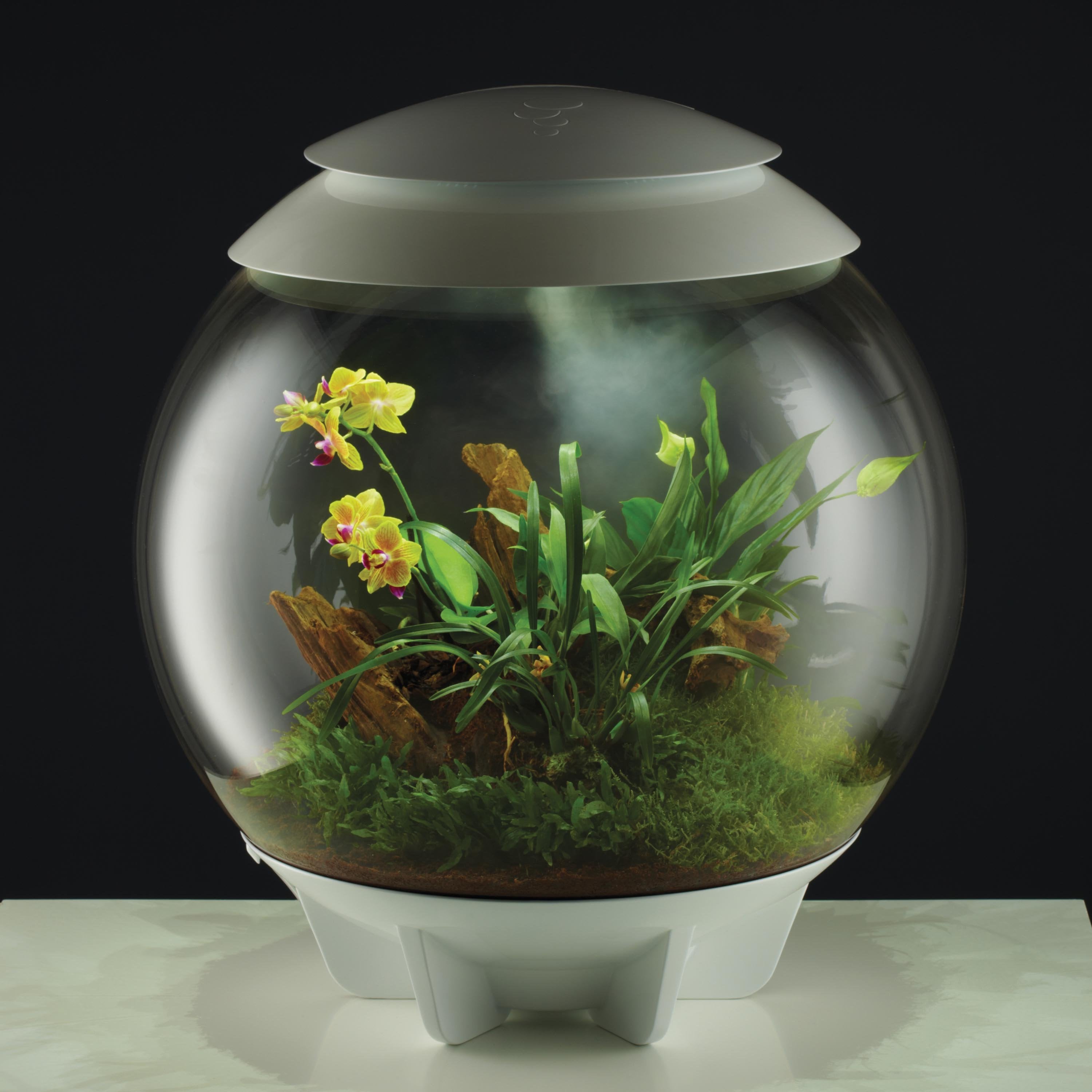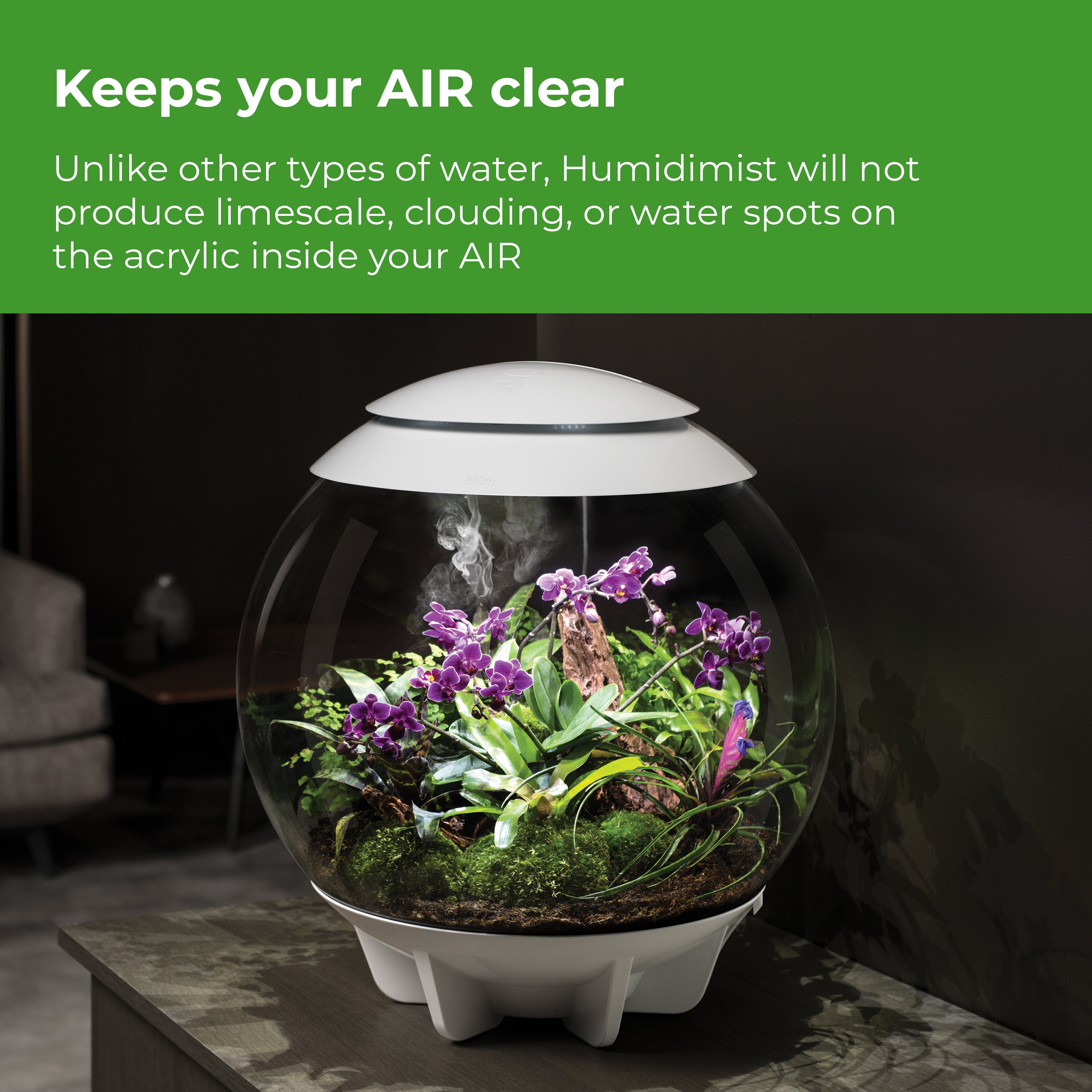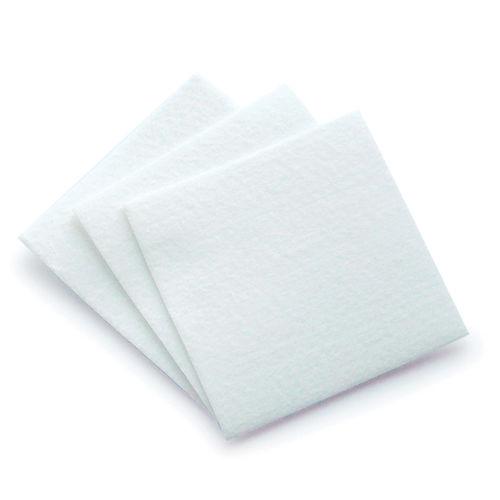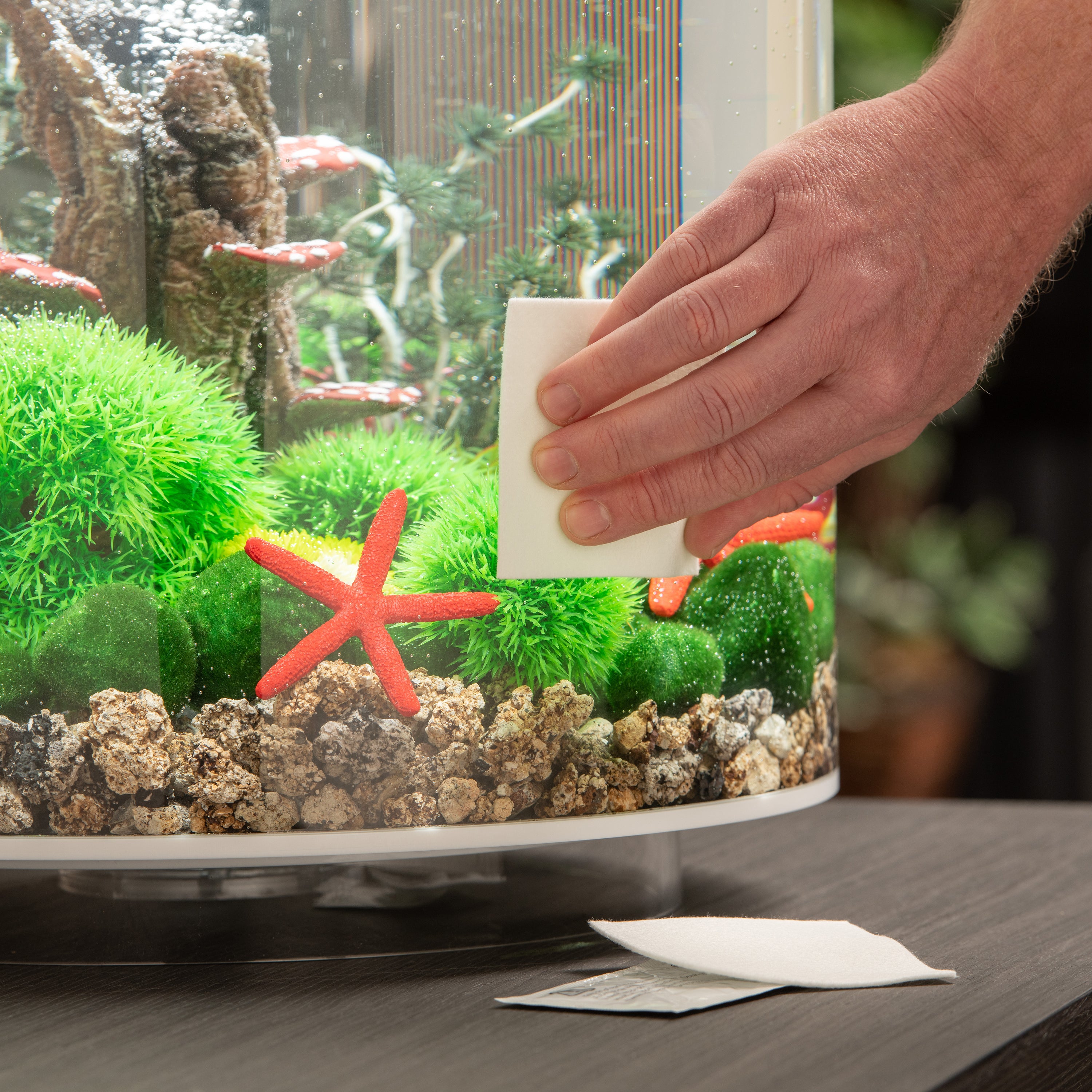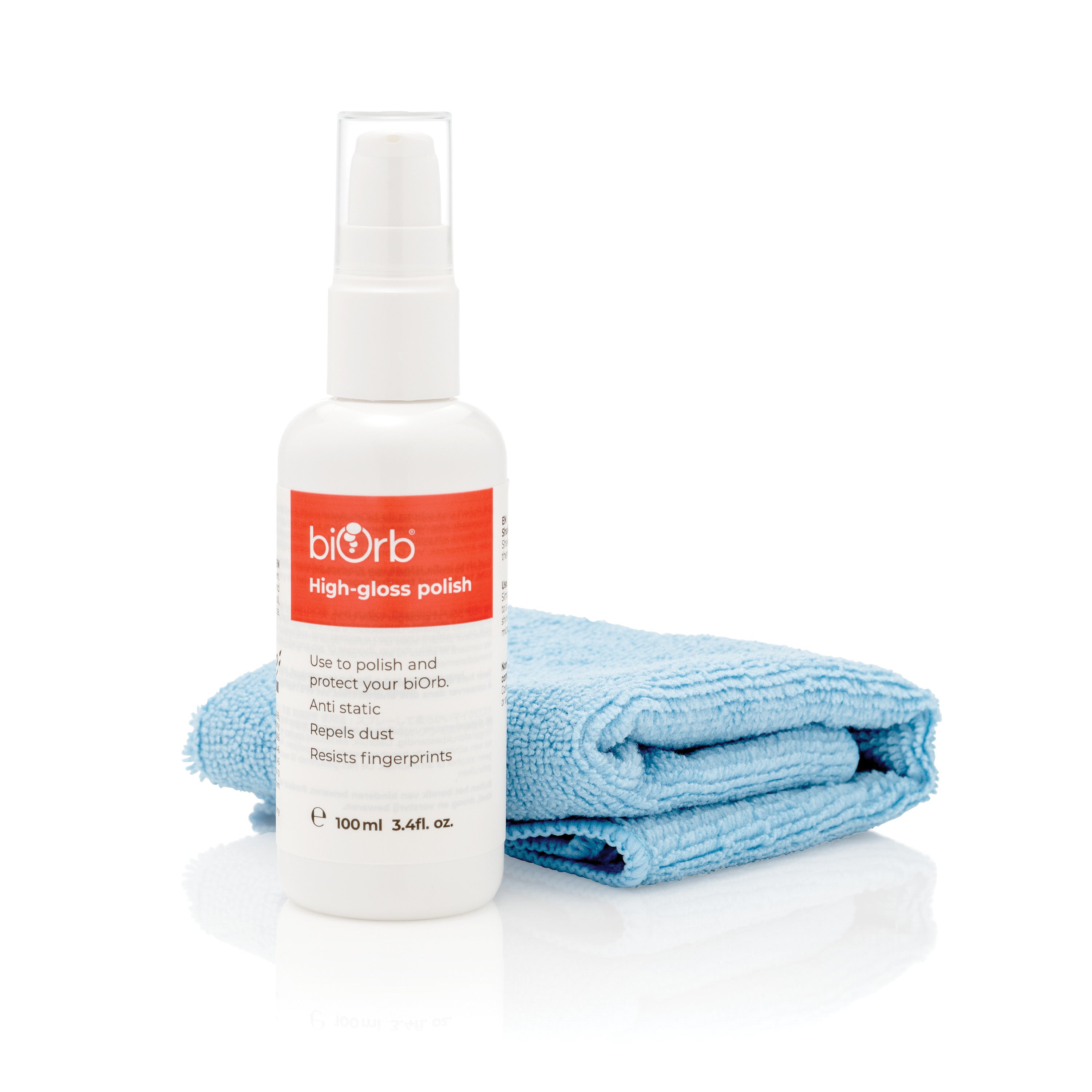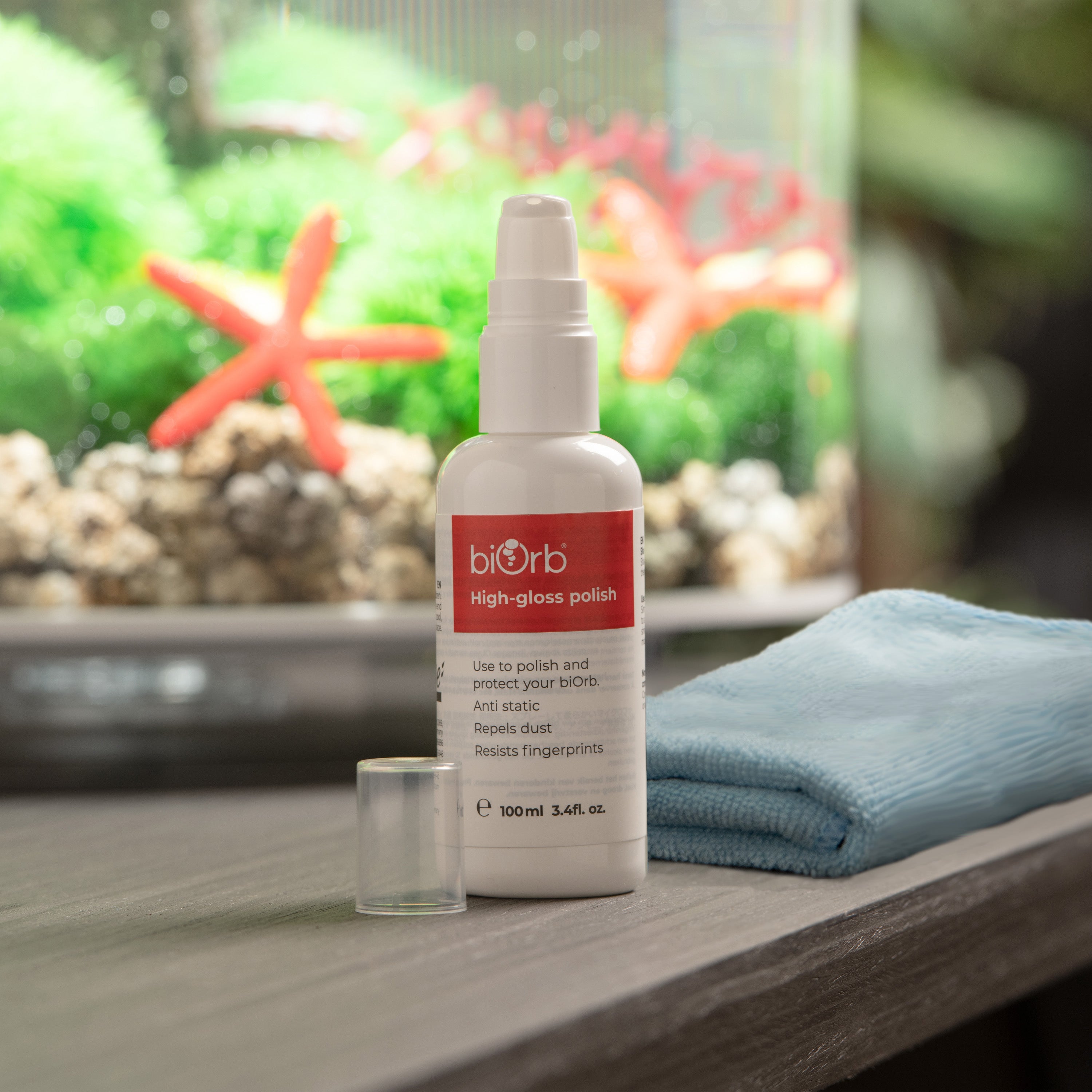Terrarium Tips & Tricks
The AIR is designed to replicate natural, real-world conditions suitable for plants that are otherwise difficult to maintain in the modern home.Below are some helpful tips and tricks to guide, inspire, and inform you while creating and maintaining your plant paradise.
Best Plants for an AIR
Foreground
Fittonia Skeleton bicolour
A stunning colour combination of a bright green leaf with red veins. Plant in small groups. Will spread but remains low growing.
Fittonia red
Has narrower leaves and remains quite small. Best planted in small groups.
Fittonia lemon
A citrus colour with wider leaves. This Fittonia can grow slightly larger.
Fittonia white
White veins on a dark green leaf. Low growing with a spreading habit. Plant in small groups.
Peperomia rotundifolia
Vibrant green, round leaves. Works well for ground cover and infill. Like to creep with new growth being a brighter green.
Peperomia angulata
Has dark green, striped, angular leaves. Good for ground cover and can be used as a feature plant.
Peperomia verticillata
The leaves form discs around the stems. Grows with a tumbling habit.
Peperomia mixed
The range of Peperomias is very extensive and varied - there’s a wide choice of leaf colours and shapes.
Ball / Pillow Moss
Use in groups or form into a larger single piece. Makes a nice edging detail. Good for creating a Japanese garden look.
Fittonia red
Has narrower leaves and remains quite small. Best planted in small groups.
Fittonia lemon
A citrus colour with wider leaves. This Fittonia can grow slightly larger.
Fittonia white
White veins on a dark green leaf. Low growing with a spreading habit. Plant in small groups.
Peperomia rotundifolia
Vibrant green, round leaves. Works well for ground cover and infill. Like to creep with new growth being a brighter green.
Peperomia angulata
Has dark green, striped, angular leaves. Good for ground cover and can be used as a feature plant.
Peperomia verticillata
The leaves form discs around the stems. Grows with a tumbling habit.
Peperomia mixed
The range of Peperomias is very extensive and varied - there’s a wide choice of leaf colours and shapes.
Ball / Pillow Moss
Use in groups or form into a larger single piece. Makes a nice edging detail. Good for creating a Japanese garden look.
Peperomia angulata
Has dark green, striped, angular leaves. Good for ground cover and can be used as a feature plant.
Peperomia verticillata
The leaves form discs around the stems. Grows with a tumbling habit.
Peperomia mixed
The range of Peperomias is very extensive and varied - there’s a wide choice of leaf colours and shapes.
Ball / Pillow Moss
Use in groups or form into a larger single piece. Makes a nice edging detail. Good for creating a Japanese garden look.
Peperomia verticillata
The leaves form discs around the stems. Grows with a tumbling habit.
Peperomia mixed
The range of Peperomias is very extensive and varied - there’s a wide choice of leaf colours and shapes.
Ball / Pillow Moss
Use in groups or form into a larger single piece. Makes a nice edging detail. Good for creating a Japanese garden look.
Peperomia mixed
The range of Peperomias is very extensive and varied - there’s a wide choice of leaf colours and shapes.
Ball / Pillow Moss
Use in groups or form into a larger single piece. Makes a nice edging detail. Good for creating a Japanese garden look.
Ball / Pillow Moss
Use in groups or form into a larger single piece. Makes a nice edging detail. Good for creating a Japanese garden look.
Feature
Ficus Ginseng
Grows with some roots - aerial roots – exposed, enhancing their ‘jungle’ like quality. Should be pruned periodically to maintain size and shape.
Adiantum raddianum rragrans (Maiden Hair Fern)
A small growing attractive plant with vibrant green leaves.
Adiantum tenerum scutum roseum
The new growth of this fern has a pink tinge.
Asparagus plumosus
Very fine bright green foliage, held from delicate branches forming many layers.
Asplenium antiquum (Birds-nest fern)
A slow growing plant with attractive bright green strap like leaves.
Cryptanthus mixed (red)
Small growing with irregular, spiny leaves. Can produce small flowers in the centre of the plant. Often develops side shoots which grow into new plants.
Cryptanthus mixed
Available in various shapes and sizes. Grow close to the ground and can be as small as 3 inches tall.
Neoregelia Fireball
Small growing with pink / purple flushed leaves. Can be grown in soil or on branches (epiphytically).
Adiantum raddianum rragrans
Also known as Maiden Hair Fern
A small growing attractive plant with vibrant green leaves.
Adiantum tenerum scutum roseum
The new growth of this fern has a pink tinge.
Asparagus plumosus
Very fine bright green foliage, held from delicate branches forming many layers.
Asplenium antiquum (Birds-nest fern)
A slow growing plant with attractive bright green strap like leaves.
Cryptanthus mixed (red)
Small growing with irregular, spiny leaves. Can produce small flowers in the centre of the plant. Often develops side shoots which grow into new plants.
Cryptanthus mixed
Available in various shapes and sizes. Grow close to the ground and can be as small as 3 inches tall.
Neoregelia Fireball
Small growing with pink / purple flushed leaves. Can be grown in soil or on branches (epiphytically).
Adiantum tenerum scutum roseum
The new growth of this fern has a pink tinge.
Asparagus plumosus
Very fine bright green foliage, held from delicate branches forming many layers.
Asplenium antiquum
Also known as Birds-Nest Fern
A slow growing plant with attractive bright green strap like leaves.
Cryptanthus mixed (red)
Small growing with irregular, spiny leaves. Can produce small flowers in the centre of the plant. Often develops side shoots which grow into new plants.
Cryptanthus mixed
Available in various shapes and sizes. Grow close to the ground and can be as small as 3 inches tall.
Neoregelia Fireball
Small growing with pink / purple flushed leaves. Can be grown in soil or on branches (epiphytically).
Orchids
Micro phalaenopsis
A small variety ideal for your biOrb AIR. Grows epiphytically so should be planted with the roots semi exposed. Can be made to reflower.
Ceratostylis retisquama
The plant has a rambling growth habit and leaves which are round on one side but flat on the other (semi-terete). Grows epiphytically or in free draining substrate. Produces a single, red-orange flower. Can be made to re-flower.
Haraella ordorata
Miniature fan shaped plants with leaves about 4cm long and 1cm wide. Well grown plants frequently flower all year. The attractive, pleasant smelling, yellow and purple flowers are held away from the plant.
Psygmorchis pusilla
A miniature plant with leaves arranged in a fan shape. Produces a succession of yellow flowers held away from the plant.
Ornithidium sophrontis
Compact with a creeping habit.
Ornithophora radicans
A true miniature with delicate white & brown flowers and grass like leaves.
Ceratostylis retisquama
The plant has a rambling growth habit and leaves which are round on one side but flat on the other (semi-terete). Grows epiphytically or in free draining substrate. Produces a single, red-orange flower. Can be made to re-flower.
Haraella ordorata
Miniature fan shaped plants with leaves about 4cm long and 1cm wide. Well grown plants frequently flower all year. The attractive, pleasant smelling, yellow and purple flowers are held away from the plant.
Psygmorchis pusilla
A miniature plant with leaves arranged in a fan shape. Produces a succession of yellow flowers held away from the plant.
Ornithidium sophrontis
Compact with a creeping habit.
Ornithophora radicans
A true miniature with delicate white & brown flowers and grass like leaves.
Haraella ordorata
Miniature fan shaped plants with leaves about 4cm long and 1cm wide. Well grown plants frequently flower all year. The attractive, pleasant smelling, yellow and purple flowers are held away from the plant.
Psygmorchis pusilla
A miniature plant with leaves arranged in a fan shape. Produces a succession of yellow flowers held away from the plant.
Ornithidium sophrontis
Compact with a creeping habit.
Ornithophora radicans
A true miniature with delicate white & brown flowers and grass like leaves.
Psygmorchis pusilla
A miniature plant with leaves arranged in a fan shape. Produces a succession of yellow flowers held away from the plant.
Ornithidium sophrontis
Compact with a creeping habit.
Ornithophora radicans
A true miniature with delicate white & brown flowers and grass like leaves.
Ornithidium sophrontis
Compact with a creeping habit.
Ornithophora radicans
A true miniature with delicate white & brown flowers and grass like leaves.
Ornithophora radicans
A true miniature with delicate white & brown flowers and grass like leaves.
Tillandsia
Tillandsia cyanea
Has a tall bract sprouting from a cluster of leaves. The bract changes from green to bright pink when the plant flowers. Each flower is purple and has three petals. Petals may not last long, but the bract remains pink for many weeks.
Tillandsia festucoides
Perfect for your biOrb AIR, this plant has long, grassy looking leaves.
Tillandsia ionantha rubra
Small plant producing a dense rosette of green leaves which take on a vivid red hue around flowering. Blooms are neon violet.
Tillandsia brachycaulos x abdita (with red floral tint)
Starts life with velvet like soft, dense green leaves. Colour changes to beautiful hues of pink and cardinal red as it starts to emit purple, pink, and yellow blooms.
Tillandsia fillifolia
Small with many, very fine leaves in rosette.
Tillandsia ionantha fuego
Makes up for its small size with its intensely neon red colouration around flowering time. Blooms are deep, velvety purple.
Tillandsia Tricolor Melanocrater
Gets its name from its multi-coloured flower stems. Elegant long, stiff leaves turn almost entirely red around flowering season.
Tillandsia fillifolia
Small with many, very fine leaves in rosette.
Tillandsia ionantha fuego
Makes up for its small size with its intensely neon red colouration around flowering time. Blooms are deep, velvety purple.
Tillandsia Tricolor Melanocrater
Gets its name from its multi-coloured flower stems. Elegant long, stiff leaves turn almost entirely red around flowering season.
Tillandsia ionantha fuego
Makes up for its small size with its intensely neon red colouration around flowering time. Blooms are deep, velvety purple.
Tillandsia Tricolor Melanocrater
Gets its name from its multi-coloured flower stems. Elegant long, stiff leaves turn almost entirely red around flowering season.
Tillandsia tricolor melanocrater
Gets its name from its multi-coloured flower stems. Elegant long, stiff leaves turn almost entirely red around flowering season.
Carnivorous
Dionaea muscipula (Venus fly trap)
Probably the most famous carnivorous plant. Trap closes when an insect touches several of the small hairs on the inside. Traps only activate 3-4 times before turning black and dying. Drosera Aliceae (Honey dew plant) Leaves are covered with hairs, each one having a sticky dew drop to trap insects.
Pinquicula
Has bright green leaves arranged in a circle. Produces a succession of purple flowers held aloft on stems. Flowers exude a sticky sap to attract and ensnare insects.
Sarracenia
A ‘pitcher’ plant which comes in a variety of colours and sizes. Insects are attracted to the mouth of the pitcher where they slip and fall inside.
Heliamphora nutans x heterdoxa
Small with bright green pitchers reaching approximately 10 cm high.
Pinquicula
Has bright green leaves arranged in a circle. Produces a succession of purple flowers held aloft on stems. Flowers exude a sticky sap to attract and ensnare insects.
Sarracenia
A ‘pitcher’ plant which comes in a variety of colours and sizes. Insects are attracted to the mouth of the pitcher where they slip and fall inside.
Heliamphora nutans x heterdoxa
Small with bright green pitchers reaching approximately 10 cm high.
Sarracenia
A ‘pitcher’ plant which comes in a variety of colours and sizes. Insects are attracted to the mouth of the pitcher where they slip and fall inside.
Heliamphora nutans x heterdoxa
Small with bright green pitchers reaching approximately 10 cm high.
Heliamphora nutans x heterdoxa
Small with bright green pitchers reaching approximately 10 cm high.
Semi-Arid
Comprehensive List for AIR 30 Only
- Aloe
- Conophytum
- Echeveria
- Haworthia
- Sansevieria
- Sempervivum
- Senecio
- Austrocylindropuntia
- Astrophytum
- Cleistocactus
- Dolichothele
- Echinopsis
- Ferocactus
- Lobivia
- Mammillaria
- Crassula
- Lithops
- Euphorbia lactea compacta
- Parodia magnifica
- Acanthocereus tetragonus
Planting an AIR Terrarium
- Place any decorative sculptures or wood before adding compost and plants to help you visualize the look as you plant around it.
- Once the compost is correctly moistened, add it around your sculpture to hold it in place, oddly-shaped pieces may need additional supports hidden under the compost.
- Firm the compost into place, a change in levels can be more interesting than a completely flat layer.
- Allow room for growth and access to clean the inside of the globe.
- Foliage and smaller plants should be used for foreground or ground cover.
- Higher, feature plants can be used to create a focal point within the AIR or as a background. The size they will grow to should be considered.
- Epiphytic plants, like Orchids, also require additional weekly feeding with a suitable fertilizer. Make sure they receive additional sprays of Humidimist to help them adjust and root in their surroundings.
- Carnivorous plants can grow very well in the AIR. You must also consider that fertilizers cannot be used and that the plants require insects as food for their source nitrogen.
Gentle reminder to research your individual plant requirements to ensure their suitability.
Routine Cleaning & Care
The biOrb AIR automatically takes control of lighting, humidity, watering and air circulation, providing everything your plants need to thrive. From time to time, you will need to perform routine maintenance to help keep your plant’s environment clean.
- Daily monitoring of plant health is very important. Trim plants when appropriate and remove any debris. Follow the AIR instructions if you need to change the settings to better suit your plants.
- On a weekly basis, check the water levels. The indicator on the base of the AIR easily shows the level of water in the base of the terrarium.
- The AIR will alert you when the Humidimist needs to be refilled in the misting unit. Once per hour, the lighting switches from light to dark.
- Every six months, you should replace the air filter, so that it can continue to absorb aerosols.
- If you need to clean the inside of the AIR, be sure to use acrylic safe cloths like Polish and Cloth Accessory or Cleaning Pads. Also, you should use Humidimist instead of normal tap water. Simply spray the inside of the AIR with HumidiMist and then use the micro-fiber cloth to clean.
⚠️ IMPORTANT: DO NOT UNSCREW ANY PART OF THE TERRARIUM. These areas have been sealed and the terrarium can be properly cleaned and maintained without this action.
Helpful Videos & Planting Inspiration
Whether you're setting up your first biOrb or looking for maintenance tips, our video guides are here to make it simple.




